There are two types of loops in the world of wired jewelry: wrapped and simple. When a jewelry design calls for a wire loop, I tend to use a wrapped one. And I’m here to tell you why.
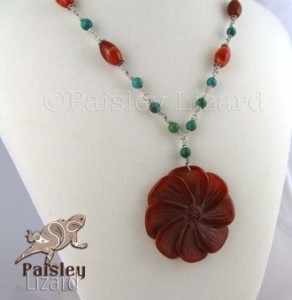
Carved carnelian flower pendant on silver wire-wrapped links necklace
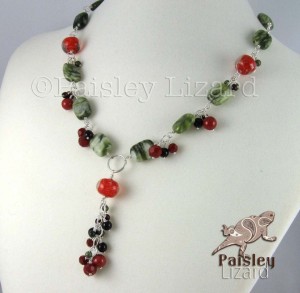
Beaded necklace using wrapped loops as connectors and for dangles.
Reason #1: Function
Wrapped loops are more durable and secure than simple loops. They aren’t likely to twist open and cause parts of the jewelry to become disconnected. If you’ve ever had a wire-linked necklace or bracelet come apart, or lost a beady dangle from a pair of wired earrings, chances are it was because the connection was made with a simple loop.
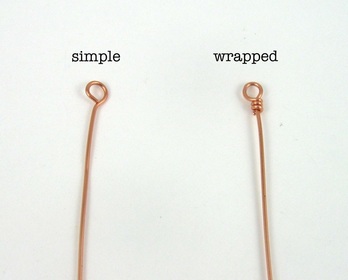
Simple vs wrapped loop.
Where simple loops are open at their base, wrapped loops are securely closed. Two simple loops joined together can work their way to mutual freedom. A simple loop connected to a wrapped loop is less vulnerable to a break-up, but not entirely immune.
Two wrapped loops together are pair-bonded. To be fair, simple loops can be made secure by soldering them closed. Soldering uses heat to fuse metal together. It won’t work for some types of wire or when the materials near the loop are not heat resistant. Or when there just isn’t enough room between the design components to work with the torch and whatnot.
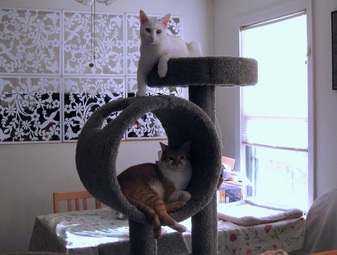
Design Consultant Cloud and Inspector Mango.
I don’t solder because, well, open flames in a small apartment with two curious and rambunctious Cat Boys just doesn’t seem prudent. As it happens, I love the look of wrapped loops in my jewelry designs and can safely use this “cold” connection method around my four-footed roommates. Which brings me to the next reason I wrap my loops.
Reason #2: Form
Wrapped loops can take many forms, and change the look of your jewelry design in the process. They can have a very orderly and controlled appearance, where the wraps fit snugly next to each other with no overlap, or they can have a free-flowing organic look when the wraps are looser or more randomly spaced, or overlapped.
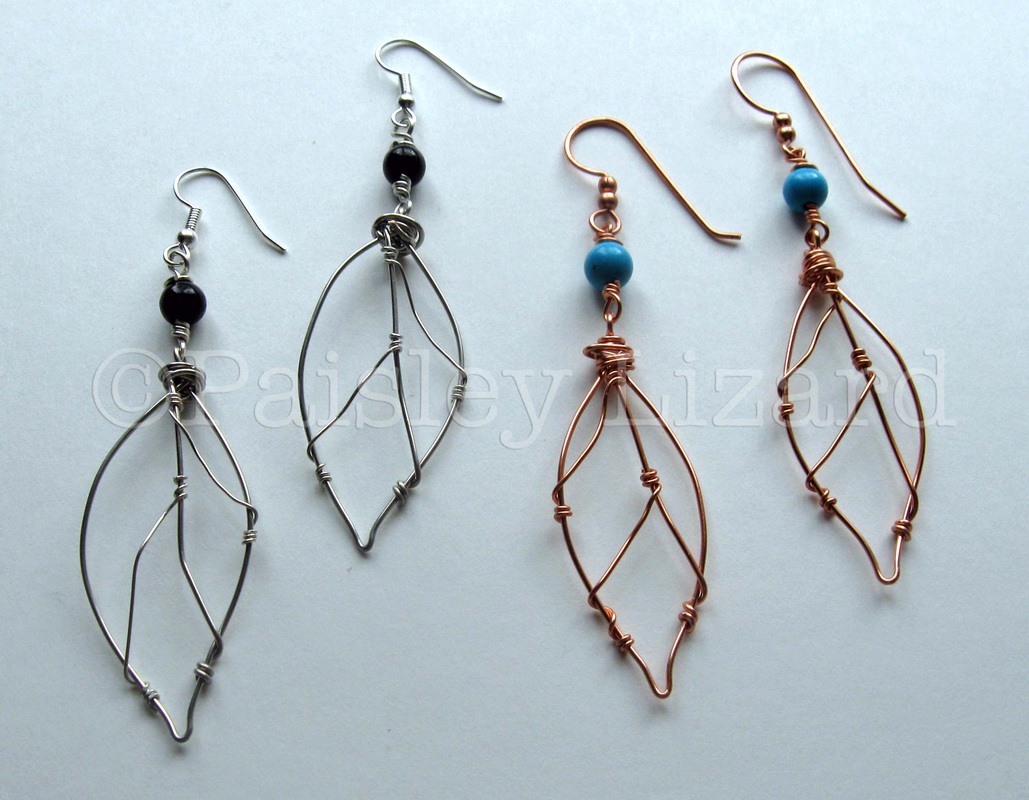
Wired leaf earrings with “organic” wire wraps at the stems.

Earrings with briolette wraps and beaded dangles.
You can carry the wrapping down around the top or base of a bead, for a bead cap effect. You can also vary the number of wraps to adjust the distance between beads or other components in your jewelry design.
You can use these wrapped loop forms like punctuation marks to vary the visual “weight” and flow of a jewelry design: a pause here, a full stop there, an exclamation for emphasis.
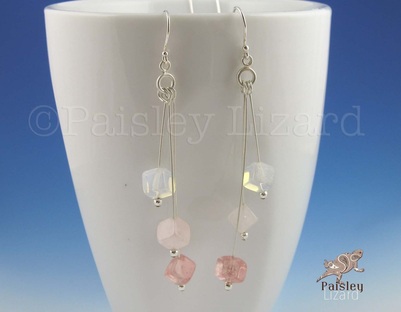
Earrings using simple loops with very light weight beads.
As a jewelry design element, simple loops are limited to various sizes of the same form. They can be small, medium, or large. That’s the extent of their repertoire.
If you’re looking for a “clean” look to a connection in your jewelry design, and you don’t need to be concerned about things coming undone, (or you can solder) then simple loops are fine. I have used them for attaching small and light-weight beads to earring stations. I avoid them entirely for necklace and bracelet designs.
Another reason to use simple loops is when you don’t have enough wire to make a wrap. I find having at least 2 inches of wire tail to work with is essential to having control over the shape of my wrapped loops. And if I’m going for a “messy” organic wrap or bead cap effect, I may want 3, 4, or more inches of wire tail.
Reason #3: Fun
My third reason for preferring wrapped loops over simple ones is I find wrapping wire immensely satisfying. It was a source of great frustration when I first starting making jewelry. My first wrapped loops were, as they say, a hot mess. Because I didn’t know what I was doing, I was holding the pliers the wrong way, and I had a crappy pair of pliers that didn’t connect.
Then I took a wire-wrapping class, thanks to one of the many friends who have nurtured my jewelry-making. The instructor took my crappy pliers away, and showed me how to use a well-made pair. Every loop I’ve made since then has been a jubilation. Okay, maybe not every loop. Some loops have been less euphoric than others and had to be cut off. Usually because I didn’t leave myself enough wire tail to maneuver.
For me, making simple loops is a much more rigid process than wrapped loops. Trying to ensure the tail of the wire is cut to exactly the correct length for the size loop I am making stresses me out. Too much pressure and too little freedom = no fun.
In conclusion
There can be more than three reasons for using wrapped loops. These are just mine. And they evolved in this order. Functionally, I gravitated toward them as a secure connection because I want my jewelry to hold up to frequent wearing. The form as a design element followed as I grew more proficient with the basic wrap and more comfortable using more organic wraps to take my designs in a different direction. Fun-damentally, I stick with wrapped loops because I like making them. There may be times when a jewelry design calls for a simple loop. I usually tell it to shush, and then run off to play with wraps.


